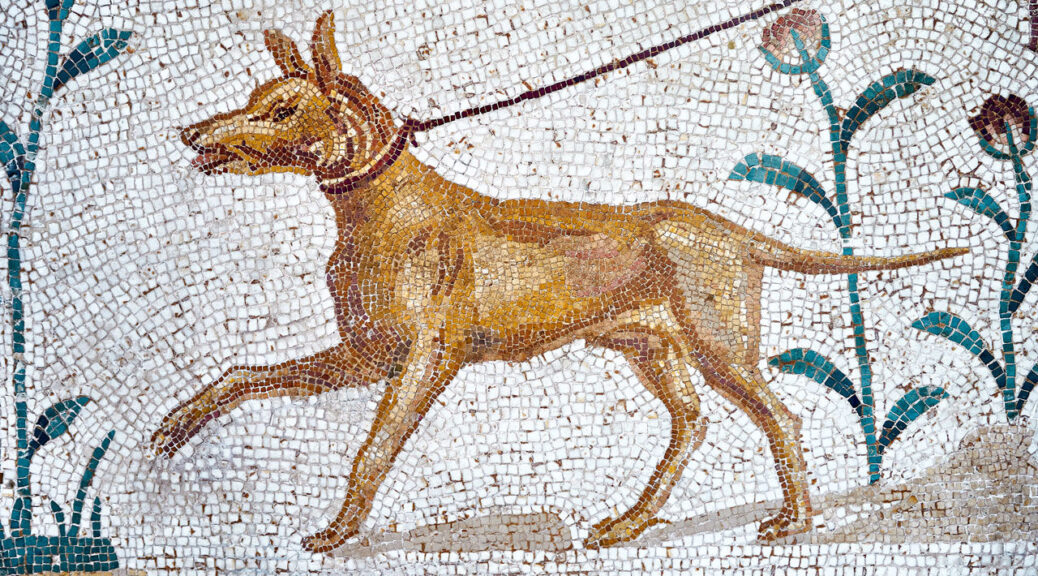Artificial Intelligence Identifies Ancient Dog Poop
The mixing of pieces of prehistoric poop is certainly not the definition of a raging good time for many people. However, for archaeologists keen on learning more about the health and diet of past populations—as well as how certain parasites evolved, the evolutionary history of the microbiome—such samples can be a veritable goldmine of information.
Nonetheless, it can be difficult to determine whether fecal samples are human or were produced by other animals, particularly dogs.
According to a recent article in the journal PeerJ, an International team of scientists has now developed a new way of combining host DNA and gut microbiome analysis with open-source machine-learning software.
The challenge of determining
Whether paleofeces and coprolites are of human or animal origin date back to the 1970s. Usually, only those samples found with human skeletons or mummies could be designated as being of human origin with any certainty.
Exceptions could be made for samples found in ancient latrines since they are highly likely to be human; samples found in trash deposits, however, are more ambiguous.
Subsequent work to document the morphology of mammal feces has made it easier to separate human from animal samples, since there are enough differences to make such distinctions. The exception is dog poo, which bears a strikingly close resemblance to human feces in both size and shape, is frequently found at the same archaeological sites, and has a similar composition. And frankly, some ancient societies routinely ate dog meat, while dogs are known to nibble on human feces. So DNA from both can be present in the same archaeological sample.

There are some helpful clues. For instance, ancient dog poo samples “typically contain masses of short, nibbled dog hairs and odd inclusions, such as fragments of clothing and rope,” the authors of the PeerJ paper wrote.
The presence of specific parasites can also indicate whether a sample is human or canine, such as eggs from pinworms (Enterobius vermicularis), which are typically only present in human feces. Scanning electron microscopy (SEM) can also be useful for identifying plant remains (such as pollen grains) in ancient samples. Rehydrating the samples can also help make the distinction since human feces will turn the rehydration solution dark brown or black; animal samples typically remain clear or turn yellow.
Dog or human?
This new coprolite identification method, dubbed coproID, combines host DNA analysis with analysis of the distinct colonies of microbes living inside humans and dogs. The scientists used their open source software to analyze both a previously sequenced modern fecal dataset, as well as a newly sequenced dataset of paleo-poop specimens and sediments from archaeological digs.
For the latter dataset, there were 20 archaeological samples (13 paleofeces, four sediments, and three sediments taken from human pelvic bone) from 10 sites, spanning periods from the prehistoric era to the medieval era, 17 of which were newly sequenced.
They got their modern fecal samples from a long-term Boston type 1 diabetes study, as well as from a broader study on human gut microbiome biodiversity being conducted in villages in the West African Republic of Burkina Faso. Per the authors, “Feces were collected fresh and stored frozen until analysis.”
The researchers found that, using the method, they could distinguish between fecal and non-fecal samples, as well as human and canine fecal samples. “One unexpected finding of our study is the realization that the archaeological record is full of dog poop,” said co-author Christina Warinner of the Max Planck institute for the Science of Human History.
“One unexpected finding is the realization that the archaeological record is full of dog poop.”
Specifically, coproID correctly identified seven of the 13 samples of paleo-poop (five humans, two canines) and flagged the non-fecal sediments as “unknown.” Of the six fecal samples, the software couldn’t identify, three did not have sufficiently preserved microbiome components to make a determination.
The other three uncertain samples hailed from a prehistoric archaeological site in the Rio Zape Valley in Durango, Mexico, and showed both high levels of dog DNA and microbiome profiles more typical of humans.
The Rio Zape samples “could have originated from a human who consumed a recent meal of canine meat,” the authors suggest. “Dogs were consumed in ancient Mesopotamia, but further research on the expected proportion of dietary DNA in human feces is needed to determine whether this is a plausible explanation.”
The alternative is that the samples came from dogs with a different microbiome profile than the microbiome data used in the study, derived from a single study of Labrador retrievers and beagles.
“Identifying human coprolites should be the first step for ancient human microbiome analysis,” said co-author Maxime Borry. “With additional data about the gut metagenomes of non-Westernized rural dogs, we’ll be better able to classify even more ancient dog feces as in fact being canine, as opposed to ‘uncertain.'”
